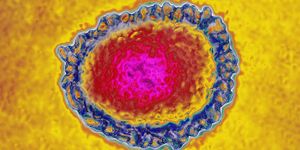Cardiac Mapping for Arrhythmia Diagnosis
Cardiac mapping is an essential diagnostic tool. These imagining tools are used for diagnosing arrhythmias in the heart. Cardiac mapping can be done in several ways. These techniques may be applied to the body surface, the endocardium, or the epicardium. No matter what type of mapping is used, the procedure is done to record accurate heart rhythm and the amplitude of the heart signal.
Two types of EGMs are generally used for such mapping. The first is the unipolar EGM, which contains signals from a single electrode. These are non-directional devices. One flaw of unipolar EGMs is their susceptibility to interference from the environment.
Less susceptible to low-frequency noise are bipolar EGMs. These devices have a pair of electrodes and provide localized measurements of the heart muscle.
More recently, omnipolar EGMs have been developed, but they are not yet widely used.
No matter which EGM is used, these devices are essential for assessing underlying heart function. These tests can not only detect an arrhythmia but can detect areas of low electrical signals indicating an arrhythmia may develop.
Further development of omnipolar EGMs are important for improved diagnostics in cardiology. These uncoordinated heart rhythms can cause a variety of symptoms. The symptoms can be concerning and may include fluttering in the chest, tachycardia, bradycardia, chest pain, shortness of breath, syncope, or dizziness.
In addition to the symptoms, arrhythmias may signify and underlying medical condition.
Common causes include heart attacks (previous or actively occurring), cardiomyopathy, stress, diabetes, and thyroid problems. The discovery of an arrhythmia can help uncover one of these conditions. A diagnosis of one such condition can help providers implement treatment much earlier on in the course of a disease.
Early detection is vital for the prevention of potentially fatal complications such as stroke or heart failure.
A heart-healthy lifestyle will help to reduce the risk of arrhythmias and other conditions of the heart. This includes a heart-healthy diet, regular physical activity, avoiding smoking and alcohol, and maintaining a healthy weight.
Sources: Sentara Healthcare, Science Direct, Mayo Clinic










